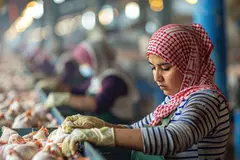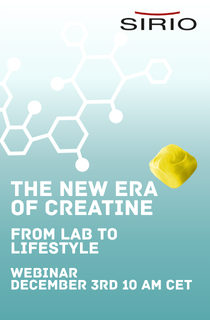Healthy diets linked to forced labor with animal-based foods posing higher risk in US
Key takeaways
- Healthy diets can still be linked to forced labor, depending on food sources and production methods.
- Protein foods like red meat, seafood, and dairy carry the highest forced labor risks in US diets.
- Plant-based and vegetarian diets show lower forced labor risks but still face issues with nuts and hand-harvested fruits.
A new study has examined the risk of forced labor linked to several ingredients in US diets. It shows that healthy eating can sometimes result in workers’ exploitation. The researchers hope their findings shape how governments and institutions buy food at scale.
Tufts University (US) and the University of Nottingham (UK) researchers stress that many Americans make food choices based not only on cost and nutrition but also on personal values, such as animal welfare and environmental concerns.
According to the International Labor Organization, around 28 million people globally are affected by forced labor — involving withheld wages, abusive living conditions, or even violence.
“Forced labor takes many forms, but most often it traps workers in jobs through isolation, dependencies on employers, exploitative pay schemes, and binding recruitment debt,” explains corresponding author on the research Jessica Decker Sparks, assistant professor at the Friedman School at Tufts University.
Which diets have the highest forced labor risk
The publication in Nature Food examines five diets, including the average American diet, recommended by federal dietary guidelines (Healthy US-Style diet, Healthy Mediterranean-Style diet, and Healthy Vegetarian diet), and the 2019 EAT-Lancet Planetary Health Diet.

It outlines and rates 200 foods based on their risk of forced labor. The risk was judged based on how and where foods in the US were grown, harvested, or processed.
“We found that recommended healthy diets could have a higher or lower risk of forced labor compared with what Americans currently eat, depending on the mix of foods,” says senior author Nicole Tichenor Blackstone, associate professor at the Friedman School.
The main deciding factor depended on how much fruit, dairy, and red meat people eat. The researchers found that protein foods were the largest source of forced labor risk across the five diets, depending on the sources.
The researchers found that the Healthy Mediterranean-style diet and the Healthy US-style diet showed greater forced labor than today’s average diet. The Mediterranean-style diet promotes more plant-based foods and seafood, with some dairy and red meat, while the US-style includes a balance of nutrient-dense foods with relatively high amounts of dairy.
Red meat and seafood combined had substantially higher risks in the Mediterranean-style diet. In the US-Style diet, the culprit was dairy. Slaughtering, processing, and creating feed for these animals are all part of livestock farming.
Vegetarian diets lower forced labor risk
The “healthy vegetarian diet, ”as laid out in the study, is rich in beans, soy, nuts, seeds, fruits, vegetables, and whole grains and had lower risks. This includes the Planetary Health Diet, which is mostly plant-based with little meat and dairy to reduce environmental impact, note the researchers.
In these diets, the largest forced labor risk was from nuts and seeds. Nuts sometimes require manual shelling, or fruits that are hand-picked rather than machine-harvested are more likely to involve forced labor.
“We hope our work represents a starting point for communities to shape dietary transitions that promote equity and justice alongside health and sustainability,” Blackstone says.
“The best way to reduce forced labor in our food supply chains is to let workers lead in shaping solutions and to back those solutions with legally binding agreements that protect them from retaliation.”















